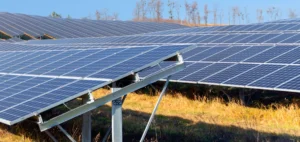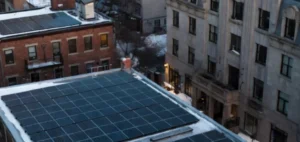China’s rise in the photovoltaic (PV) panel industry is disrupting global economic and geopolitical balances. By consolidating its position as the leader with over 80% of global production, China is forcing major economies to rethink their industrial and trade strategies. This context fuels tensions while reshaping supply chains.
Chinese dominance rooted in structural and strategic advantages
Since the 2000s, China has deployed an exceptional industrial strategy to establish itself in the photovoltaic sector. Industrial clusters, combining integrated production and optimized logistics, have played a key role in this rise. These clusters bring together all stages of production, from polysilicon to final modules, creating economies of scale that reduce costs.
Chinese manufacturers also benefit from local support policies, including direct subsidies, low-cost land, and preferential loans. By combining these advantages with advanced infrastructure, China has enabled its companies to produce at costs significantly lower than their Western competitors.
Technological mastery strengthens this dominance. Chinese manufacturers like LONGi and Trina Solar invest heavily in advanced technologies, particularly tunnel oxide passivated contact (TOPCon) cells, which increase module efficiency while lowering costs. These technological advances place Chinese companies at the forefront of global innovation.
The limits of Western protectionist policies
Faced with China’s rise, the United States and the European Union introduced protectionist policies. Starting in 2012, the United States imposed anti-dumping and countervailing duties to limit imports of Chinese panels. In 2018, additional tariffs were implemented, followed in 2022 by the Inflation Reduction Act (IRA), offering subsidies covering up to 30% of local solar supply chain investment costs.
However, these initiatives have shown their limits. Manufacturing costs in the United States remain about three times higher than Chinese products. Furthermore, Chinese manufacturers quickly adapted their supply chains. By relocating part of their production to Southeast Asia, particularly Thailand, Vietnam, and Malaysia, they effectively circumvent trade barriers. These countries have become major hubs for the reassembly of solar modules destined for Western markets.
In Europe, protectionist policies have also failed to revitalize the local industry. The Carbon Border Adjustment Mechanism (CBAM) imposes taxes on inputs like aluminum, but its direct impact on solar equipment remains limited. European customs tariffs, introduced in 2012, were lifted in 2018 to stimulate solar installations. This decision strengthened the dominance of Chinese products in the European market.
Overcapacity and its global implications
China’s overcapacity poses a major challenge to the global industry. The country produces far more than its domestic market can absorb, flooding the global market with low-cost products. While this dynamic accelerates the adoption of solar panels in many countries, it threatens local industries in countries without tariff protections.
The European Union is a striking example. The removal of customs tariffs in 2018 facilitated access to cheap Chinese products but at the cost of contracting its own manufacturing industry. Conversely, the United States, by maintaining strict trade barriers, has had to compensate with extended subsidies, significantly increasing costs for consumers and governments.
Fragmentation of supply chains
Geopolitics plays a key role in reconfiguring supply chains. U.S. restrictions on products linked to forced labor in the Xinjiang region, the world’s main polysilicon supplier, have led to major disruptions. The Uyghur Forced Labor Prevention Act (UFLPA), adopted in 2021, bans the import of products associated with this region. This legislation has forced companies to rethink their supply sources, creating delays and increasing costs.
In response, Chinese manufacturers are diversifying their production sites. In addition to Southeast Asia, massive investments are being made in the Middle East, where modern infrastructure and attractive energy costs are drawing producers. However, this growing fragmentation complicates logistics and increases delivery times for Western markets.
A transition to new trade norms
In addition to geopolitical tensions, emerging trade norms are redefining the conditions of global trade. In Europe, the Carbon Border Adjustment Mechanism and strict carbon footprint requirements are becoming essential criteria for public procurement. These new rules effectively exclude many Chinese manufacturers unable to provide compliant documentation.
These trade norms create additional barriers for Chinese manufacturers, but their long-term impact remains uncertain. While they encourage more responsible production, they also risk increasing costs for end consumers and limiting access to affordable solar panels.
Uncertain perspectives
As trade tensions persist, the global solar industry evolves in an uncertain environment. China retains a competitive advantage through its production capacity and technological innovations. However, the growing pressure of Western regulations and protectionist policies could limit its long-term dominance.
On the other hand, Western countries must find a balance between reducing their dependence on China and maintaining economic competitiveness. Current subsidies, while effective in the short term, require a long-term strategy to ensure the viability of local industries.






















